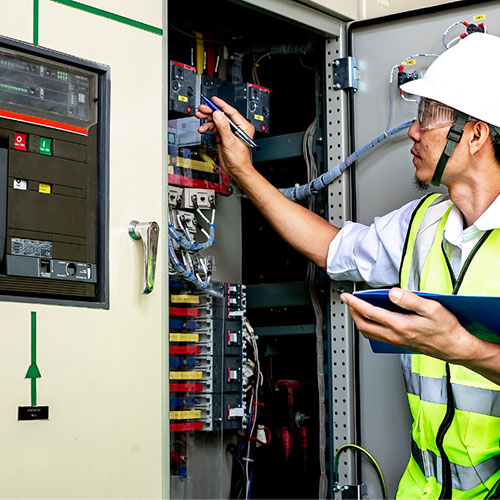Introduction
Australia’s growing energy infrastructure and industrial landscape rely heavily on the safe and efficient operation of high-voltage (HV) electrical systems. Whether powering manufacturing plants, hospitals, transport networks, or large-scale commercial sites, the integrity of these systems is non-negotiable. That’s where HV Testing and Commissioning Services come in. At MPT Services, we understand how vital these services are to keeping electrical infrastructure both safe and compliant.
For project managers, electrical contractors, and asset owners, understanding how these services work—and why they’re essential—is key to ensuring compliance, performance, and safety. In this article, we explore what HV testing and commissioning involve, why they matter in the Australian context, and how a trusted provider like MPT Services can help.
What Are HV Testing and Commissioning Services?
HV Testing involves the inspection and validation of high-voltage equipment and systems to confirm their operational condition, integrity, and compliance with standards. This includes testing transformers, switchgear, protection relays, circuit breakers, and cables under both energized and de-energized conditions.
Commissioning Services go a step further by verifying that an entire electrical installation functions as intended. It involves end-to-end checking of system design, installation quality, calibration of protective devices, system integration, and documentation before the system goes live.
These processes are not just formalities—they are critical steps that validate the safety, efficiency, and long-term reliability of any HV installation.
Why It’s Crucial in the Australian Context
1. Stringent National Standards and Regulations
Australia has some of the most robust electrical safety and compliance standards in the world. Installations must comply with regulations like:
- AS/NZS 3000: Wiring Rules
- AS/NZS 2067: Substations and HV installations
- AS 62271 series: High-voltage switchgear and controlgear
Non-compliance can lead to legal penalties, failed inspections, operational risks, and reputational damage. HV testing and commissioning help ensure that installations meet or exceed these standards.
2. Extreme Environmental Conditions
From remote mines in the Outback to coastal facilities exposed to salt and humidity, Australian environments can be harsh on electrical systems. HV testing helps detect environmental impacts such as insulation degradation, moisture ingress, or corrosion—issues that, if undetected, can lead to catastrophic failures.
3. Increasing Demand for Reliability
With energy reliability becoming a national priority, businesses and utilities must ensure their HV infrastructure can perform 24/7. Downtime is costly—not just financially, but also in terms of safety and compliance. Professional commissioning ensures systems are ready to operate flawlessly from day one.
Key Components of HV Testing and Commissioning
Here are some of the key tests and procedures typically involved:
- Insulation Resistance Testing: Evaluates the health of cable insulation.
- High-Potential (Hi-Pot) Testing: Confirms insulation strength under stress.
- Primary and Secondary Injection Testing: Validates protection relays and circuit breakers.
- Partial Discharge Testing: Detects internal flaws in electrical equipment.
- Functional Commissioning: Checks full system performance, logic control, fail-safes, and backups.
- Thermal Imaging and Load Testing: Identifies hotspots and verifies performance under operational load.
Each step plays a crucial role in identifying latent issues, ensuring safety, and reducing long-term maintenance costs.
Choosing the Right Partner in Australia
When it comes to HV testing and commissioning, the expertise of the provider is just as important as the equipment being used. At MPT Services, we deliver:
- NATA-accredited testing in accordance with Australian standards
- Certified field engineers with years of industry experience
- Comprehensive commissioning documentation and reports
- Custom solutions for industries including mining, renewables, manufacturing, and utilities
- Support for both new installations and existing system upgrades
Our goal is simple: to ensure your HV systems are safe, reliable, and compliant—from installation to operation.
Common Pitfalls Without Testing & Commissioning
Unfortunately, many projects skip or underinvest in testing and commissioning, leading to:
- Equipment failure during startup
- Inaccurate protection settings resulting in arc faults or power loss
- Non-compliance penalties
- Increased risk to personnel
- Unplanned maintenance and costly downtime
All of these are avoidable with a systematic testing and commissioning plan from the outset.
The MPT Services Advantage
Based in Australia, MPT Services has built a strong reputation for delivering reliable, cost-effective, and standards-compliant HV solutions across the country. We understand local regulations, site-specific challenges, and the high expectations of today’s industrial and infrastructure projects.
From metro areas to remote locations, our mobile teams bring the right tools and expertise to keep your project on schedule and on spec.
Final Thoughts
HV Testing and Commissioning Services are not optional—they are essential for the safe and successful delivery of any high-voltage project in Australia. They safeguard lives, ensure compliance, and protect your investment.
Whether you’re developing a new site or upgrading legacy infrastructure, don’t overlook this critical stage. Partner with an experienced provider like MPT Services to make sure your systems are ready to power the future—safely and reliably. Electrical safety isn’t just about having the right equipment—it’s about ensuring that equipment is installed, tested, and commissioned correctly. By investing in professional HV Testing and Commissioning Services, you protect both people and assets while laying the foundation for long-term reliability.
Read This Only Click Here












